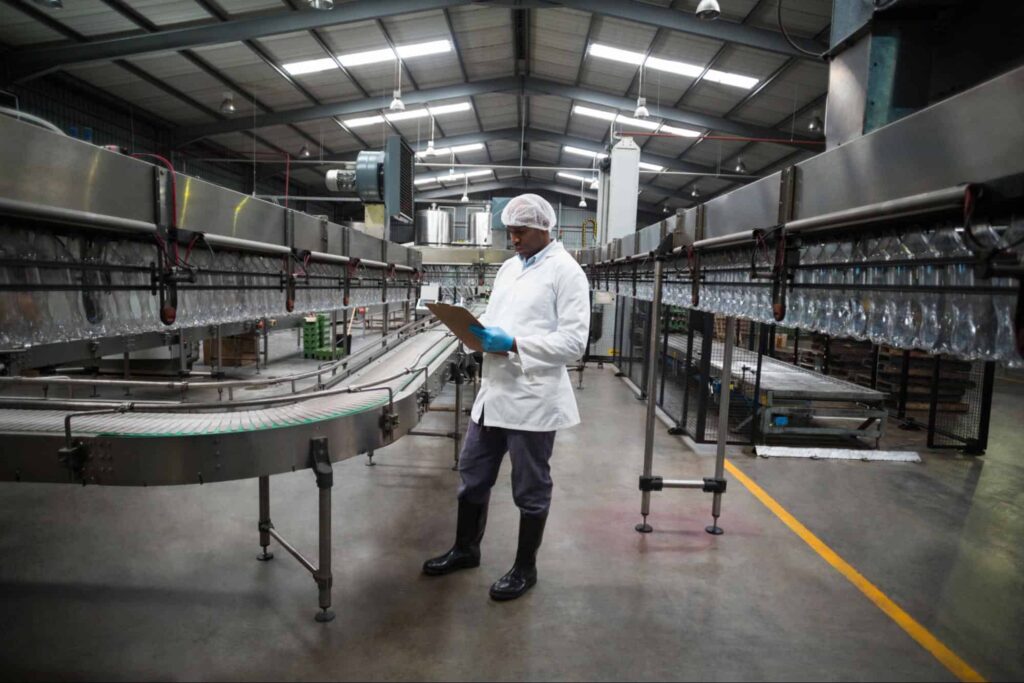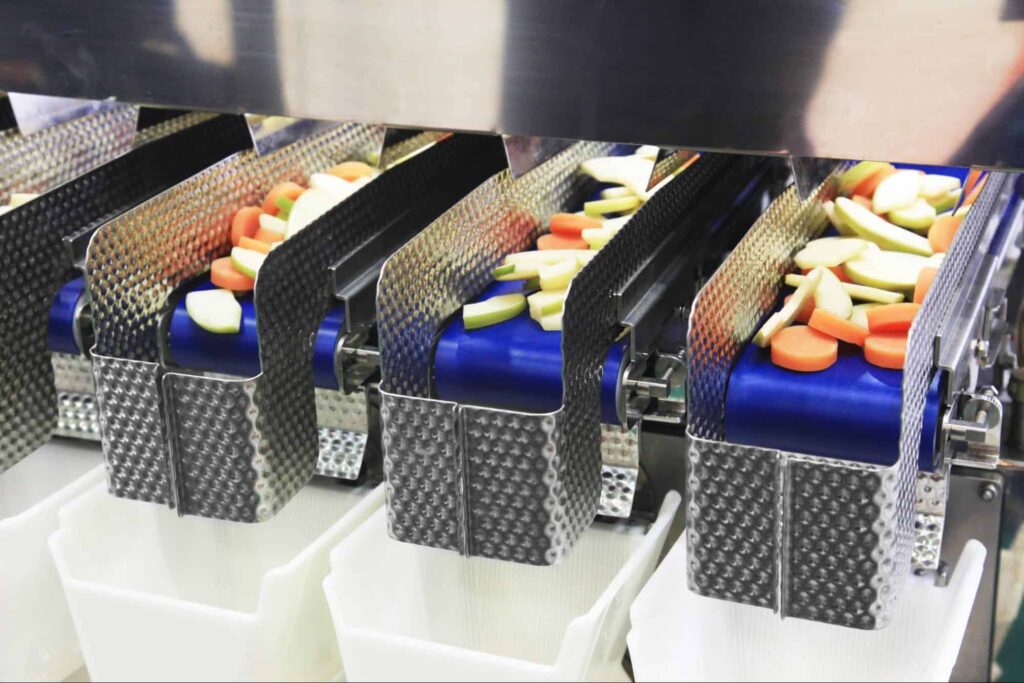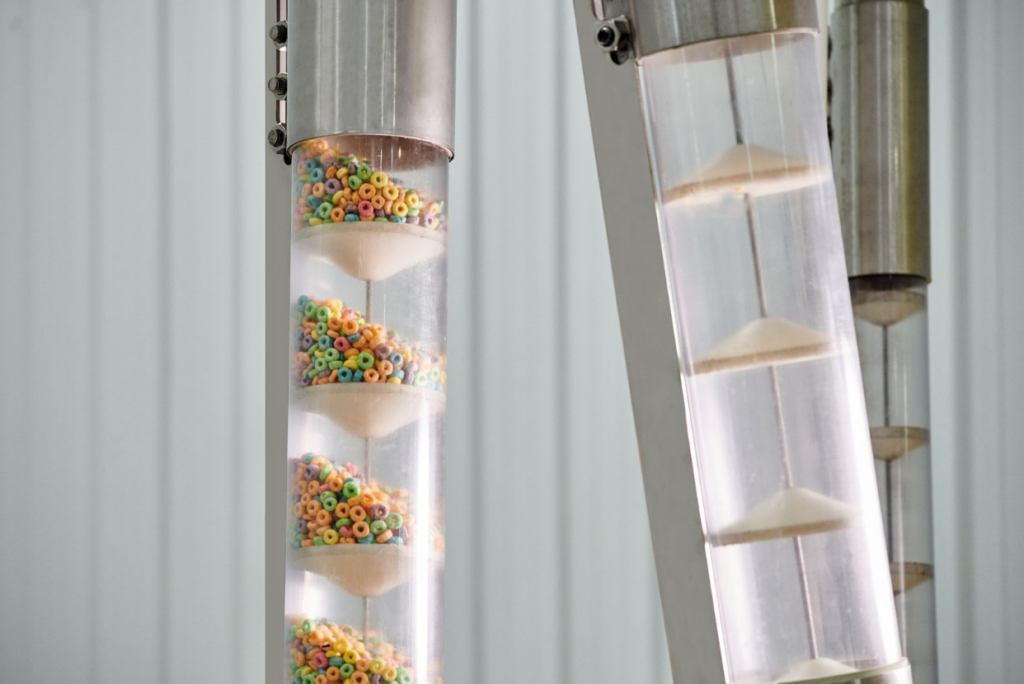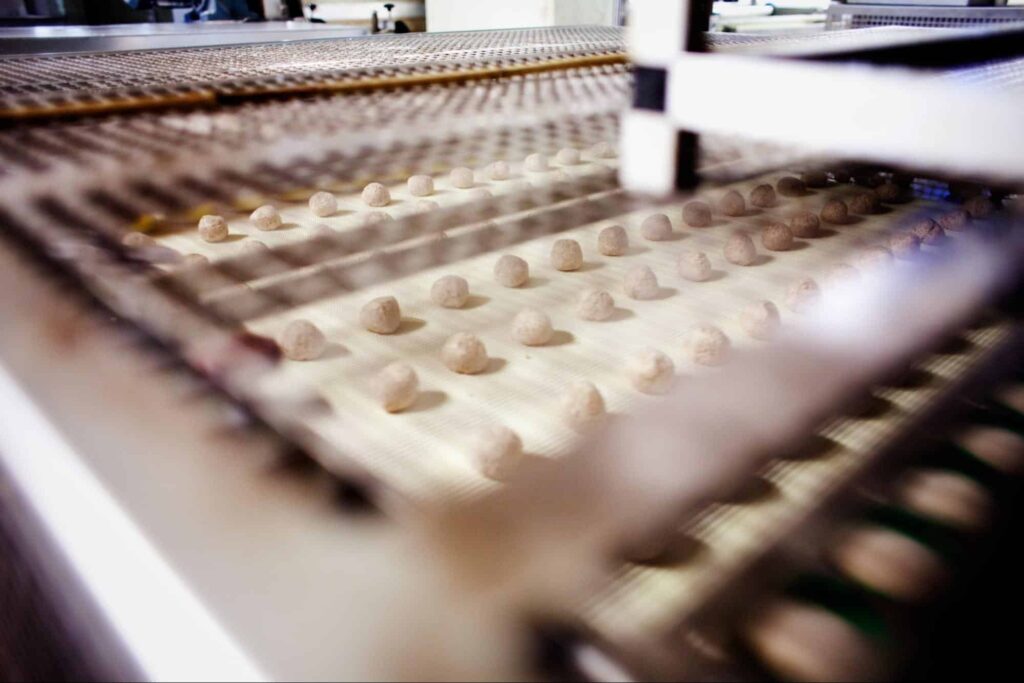Overcoming conveying challenges by using a tube conveyor system is a much-needed solution in the industrial world. Such automation conveyor systems offer immense potential for businesses because the transport of goods and materials in the most efficient way is one of the key elements for overall success. With a focus on simplicity, efficiency, and versatility, tube conveyor systems are the bulk material handling equipment that’s increasingly becoming a preferred choice across different industries.
Why Look For More Convenient Solutions?
Conveying material in any industry can be a difficult task. When deciding on the best conveyor system to use, careful consideration must be paid to the following factors: features of the conveyed material (moisture content, bulk density, stickiness), the size of the facility, the layout of the facility, and the type of machinery already in use.
To successfully convey material, a plant must take into account the many challenges that can arise. According to a recent survey conducted by Cablevey in partnership with Ascend2, these are the top five most common challenges in material conveying:
- Cleaning and maintenance (54% of surveyed facilities),
- Downtime or service (33%),
- Layout or space requirements (31%),
- Broken materials (29%),
- Energy consumption (23%).
So, let’s take a look at how a tube conveyor system (such as the Cablevey tubular drag conveyor) can help reduce or eliminate them.

Cleaning Issues
In the food processing industry, a conveyor system must adhere to strict sanitation and safety standards set by government agencies. Even the slightest contamination can lead to a production shutdown and hefty fines, not to mention the potential health risks to consumers.
It’s imperative to regularly clean and maintain your conveying system. But the very nature of conveyors – with their many nooks and crannies – makes them difficult to clean. This often leads to production downtime as facilities work to clean the equipment and prevent cross-contamination.
The conveyor also must be able to withstand high-pressure washdowns with harsh chemicals. This can cause wear and tear on the system, leading to even more downtime for repairs.
The material the conveyor is made from has to be resistant to microbial growth and corrosion. The most common materials used in food-grade conveyors are stainless steel, aluminum, and polymers. The surfaces that come in direct contact with the conveyed product or material must be non-porous and smooth for easy cleaning.
The conveyor design needs to include as few nooks and crannies as possible so that bulk solids residue can’t accumulate. There should be a minimal number of fasteners, and each conveyor frame should be rounded and welded.
The conveyor motor should be enclosed and dust-tight. This will keep the motor and other electrical components clean and free from contaminants. If there is a need for the motor to be disconnected, it would be best if this could be achieved without the use of any special tools.
Maintenance Issues
Just as a conveyor must be regularly cleaned, it must be properly maintained to prevent costly downtime. A well-maintained conveyor system will have a longer lifespan and will be less likely to break down, leading to disruptions in production. Several things need to be done regularly to keep a conveyor system running smoothly:
- Inspections should be conducted regularly to check for any wear and tear. These can be done by trained personnel or by the manufacturer.
- Lubrication is essential to keep the moving parts of the conveyor system working properly. This should be done according to the manufacturer’s instructions.
- The bearings need to be checked and replaced if they are worn out. Again, this should be done according to the manufacturer’s instructions.
- The belt or chains need to be tensioned correctly and adjusted when necessary.
- The electrical components should be kept clean and free from contaminants.
If these tasks are not done on a regular basis, the conveyor system will start to wear down and break down more often. 64% of decision-makers in choosing conveyor systems confirm that maintenance issues are the main reason they typically consider updating their conveying processes.
Regular maintenance of conveyor systems can often lead to excessive downtime, posing a significant challenge. This downtime can be exacerbated by conveyor components that are challenging to reach and parts that necessitate specialized tools or training for replacement. However, many, if not all, of these issues can be mitigated through the optimization of maintenance procedures and the careful selection of the most suitable conveyor technology to meet your unique requirements.

Material Breakage
In the food processing industry, material breakage is common, especially when conveying fragile items, friable items, blends and mixes, items of varying sizes or shapes, and other difficult materials. There are several reasons why bulk material breakage occurs during conveying:
- The product being conveyed is not properly stabilized,
- The conveyor system is not designed for the type of product being transported,
- The conveyor speed is too fast or too slow,
- The product is not evenly distributed along the length of the conveyor,
- There is a lack of support or protection for the product or similar.
In terms of breakage physics, the two most common factors of material breakage are fall impact and collision impact.
Fall Impact
Fall impact occurs when the product falls from a higher elevation onto a lower one. It is also called free-fall impact. The severity of the fall impact depends on the height from which the product falls and the surface onto which it falls. For example, if a fragile product falls from a height of 5 feet onto a hard surface, the impact will be much greater than if it falls from the same height onto a soft surface. Material breakage resulting from free fall is typically found in gravity roller conveyors and bucket elevator systems.
Collision Impact
Collision impact occurs when two material particles collide or a material particle collides with a hard surface, such as a conveyor component. The severity of the collision depends on the weight and velocity of the products involved and the type of surface they are colliding with. For example, if two lightweight particles collide at high speed, the impact will be much greater than if two heavy particles collide at a low speed.
Material breakage resulting from the collision is typically found in a belt conveyor system and screw conveyors. These types of impact can be minimized by using the right conveyor system for your needs. For example, if you are conveying fragile items, you will need a conveyor system with gentle curves and slow speeds to prevent the product from falling or colliding. If you are conveying friable items, you will need a conveyor system that has a low angle of inclination and is equipped with devices that can stabilize the product.
Finally, if you are conveying items of varying sizes or shapes, you will need a conveyor system that can adjust to the size and shape of the product. Considering these factors, you can minimize material breakage and ensure that your products reach their destination in one piece.

Floor Space Limitations
Depending on where your business is located, the chances are that industrial space is pretty limited – and very expensive. In order to save space, you need to carefully design and plan out your food processing facility layout. So what happens if you have to convey materials around a corner and to different floors? What if you need to transport your materials both vertically and horizontally? What if your ceiling is low and your conveying distance is great? Does that mean you need to use multiple conveyors for each use case? Not necessarily.
You can find a solution that resolves these challenges by using a tube conveyor system.
The table below shows the challenges that come with floor limitations and solutions that a custom conveyor belt for food offers.
| Challenges With Non-Optimal Layout | Solutions With Optimal Conveyor Design |
| Worker injuries due to cluttered floor and machinery. | Designing multi-level conveyors to make effective use of vertical space. |
| Reduced conveyor throughput due to excessive turns and travel distance. | Implementing conveyors capable of moving materials at an angle, around corners, or up and down specific grades. |
| Increased product damage due to improper conveyor design. | Using curved conveyors to navigate tight corners without causing damage or taking up extra space. |
| Increased costs due to inefficiencies in layout, materials, and labor. | Choosing systems with low profiles to accommodate areas with low ceiling height. |
| Constraints in conveying materials over long distances without sacrificing speed or performance. | Opting for advanced conveyor technologies that can efficiently move materials over long distances. |
Overcoming Conveying Challenges By Using A Tube Conveyor System
Tube conveyors are designed to overcome many of the common challenges businesses face with conveying. They can be used in various applications and industries, including food processing, pharmaceuticals, manufacturing, and more. Let’s start by defining what tube conveyors are.
What Is a Tube Conveyor System?
As its name suggests, a tube conveyor system consists of a series of tubes used to convey materials. The tubes can be straight or curved and can be joined together to create a system tailored to your specific needs. The material is transported inside the tube with the help of a chain or cable, through which circular solid discs are connected to it. The discs are evenly spaced out, forming pockets in which material is transported.
The tube conveyor system is a versatile conveying solution that can be used in a variety of applications and industries. It is especially well-suited for conveying in tight spaces, around corners, and over long distances. Tube conveyors are also a great option for conveying products that are sensitive to damage as they travel through the system in a protected environment. Tubular conveyors are ideal for solving the most common challenges in material conveying.

How a Tube Conveyor System Helps
In the world of material handling and logistics, a tube conveyor system emerges as a game-changer. With its unique design and efficient functionality, it addresses many challenges traditionally associated with conventional conveying systems. From improving sanitation standards and reducing downtime for maintenance to optimizing space utilization and ensuring product safety, a tube conveyor system holds the key.
ACCORDION
Cleaning Made Easy
In terms of cleaning, tube conveyors made by Cablevey are outfitted with a variety of wet and dry cleaning methods, including what could be categorized as a self-cleaning system. This system ensures that the conveyor remains clean and free of debris regardless of the product being conveyed. It includes a urethane disc that is inserted into the tube. This disc is dragged along the inside of the tube as the conveyor is in use, effectively scraping off any build-up or residue. Clean-in-place methods are also available, allowing the conveyor to be cleaned without having to disassemble it. This is a huge benefit in terms of efficiency and downtime.
Requires Less Maintenance
Cablevey tubular conveyors also require very little maintenance. While tubular chain systems require regular chain tensioning, which can be time-consuming and costly, Cablevey’s tubular conveyors utilize pneumatic tensioning for the cables. Thanks to pneumatic tensioning, the tension of the conveyor cable can be adjusted with a simple turn of a knob. Our pneumatic conveyor systems eliminate the need for regular maintenance in this area and drastically reduce downtime.
Avoids Material Breakage
The gentleness of tubular drag cable and disc systems on conveyed materials cannot be overstated. This is one of the biggest benefits of using a tube conveyor system. Many products normally damaged during conveyance can be transported safely and damage-free. The main principles behind Cablevey’s gentle conveyors are the low conveying velocity, the use of a continuous cable as the conveying medium as opposed to individual flights or rollers, and the circular pocket shape, which minimizes material contact. Material is evenly spaced out along the conveyor tube, preventing backpressure. The entire system is enclosed, meaning that there are no drastic variations in humidity or temperature that could damage the product.
Overcomes Floor Space Limitations
In terms of space limitations, tube conveyors can be designed to fit into any space, no matter how tight. They can also be adapted to travel up and down inclines and around corners, making them a very versatile option for conveying in difficult or confined spaces. The main feature of Cablevey tubular drag conveyors is their modular design. Modular means that each component of the conveyor – the drive unit, funnel, tube, cable and discs, inlet, turnaround, discharge, and more – can be replaced or upgraded as needed, making it a versatile option that can grow with your business.
Additional Benefits
Other benefits of tube conveyor systems to keep in mind include:
- Ability to convey a wide variety of products, such as pet food, snack foods, coffee, nuts, specialty grains, breakfast cereal, tea blends, and similar.
- Low operating and maintenance costs – low energy consumption.
- Low noise levels.
- Little to no risk of dust hazards and dust explosions.
- It can be designed to work in harmony with other equipment in your processing plant and more.
Cable vs. Chain Systems
The two primary versions of tubular drag systems are tubular drag chain conveyors and tubular drag cable conveyors. Drag chain conveyors are not ideal for food processing and can be demanding in terms of cleaning. Namely, the chain that runs the length of the tube is exposed and comes in direct contact with the product being conveyed. This means that there is a greater risk of contamination and product damage due to the chain itself.
Cable conveyors are a much better option for food-grade conveying, as they do not have exposed chains (or chains at all) and are much easier to clean. The cable that runs the length of the tube is contained within a nylon seal and does not come in contact with the product.

Implement an Industrial Conveyor Belt System and Make Your Processes Efficient
Automated conveyor belt system has revolutionized industrial production as we know it, and modern equipment has come a long, long way. However, there are still certain challenges that have to be addressed for the production process to run smoothly, such as floor space constraints, material breakage, cleaning and maintenance issues, excess energy consumption, and more.
Fortunately, there are options available to overcome those challenges, such as tube conveyor systems. Thanks to their enclosed design, low conveying velocity, and use of a continuous cable as the conveying medium, tube conveyors are gentle on conveyed materials and can be adapted to fit into any space. They also have low noise and low energy consumption, making them a good choice for businesses looking for an economical conveyor system.If you are looking for a conveyor belt for a warehouse that can address the challenges of conveying your product, be sure to consider a tube conveyor system from Cablevey. We have provided gentle and reliable conveyance solutions for over 50 years, and our experience speaks for itself. Contact us today to discuss your specific needs and see how we can help you overcome the challenges of conveying your product.






